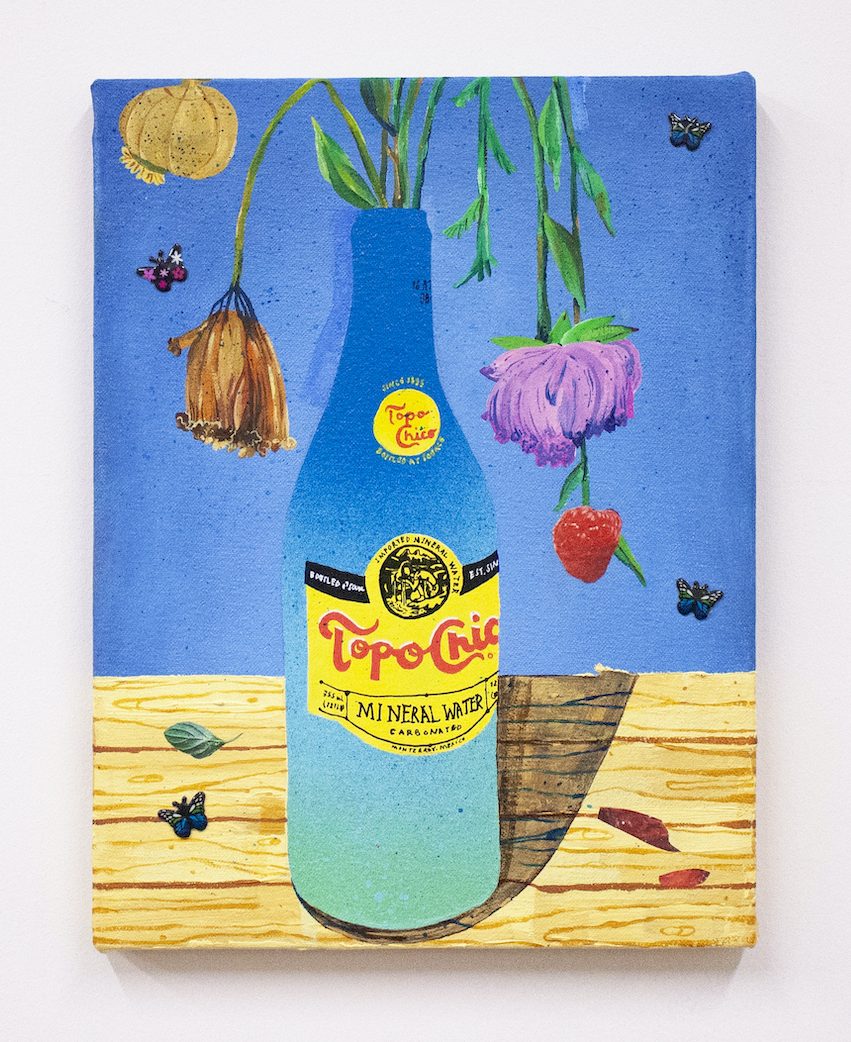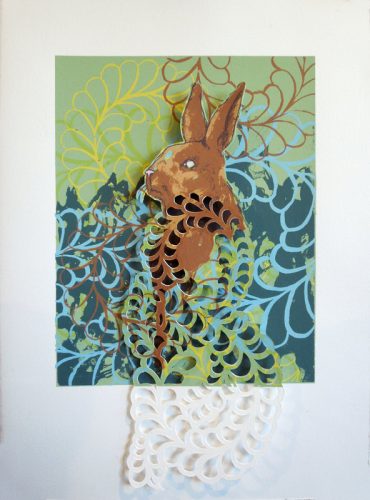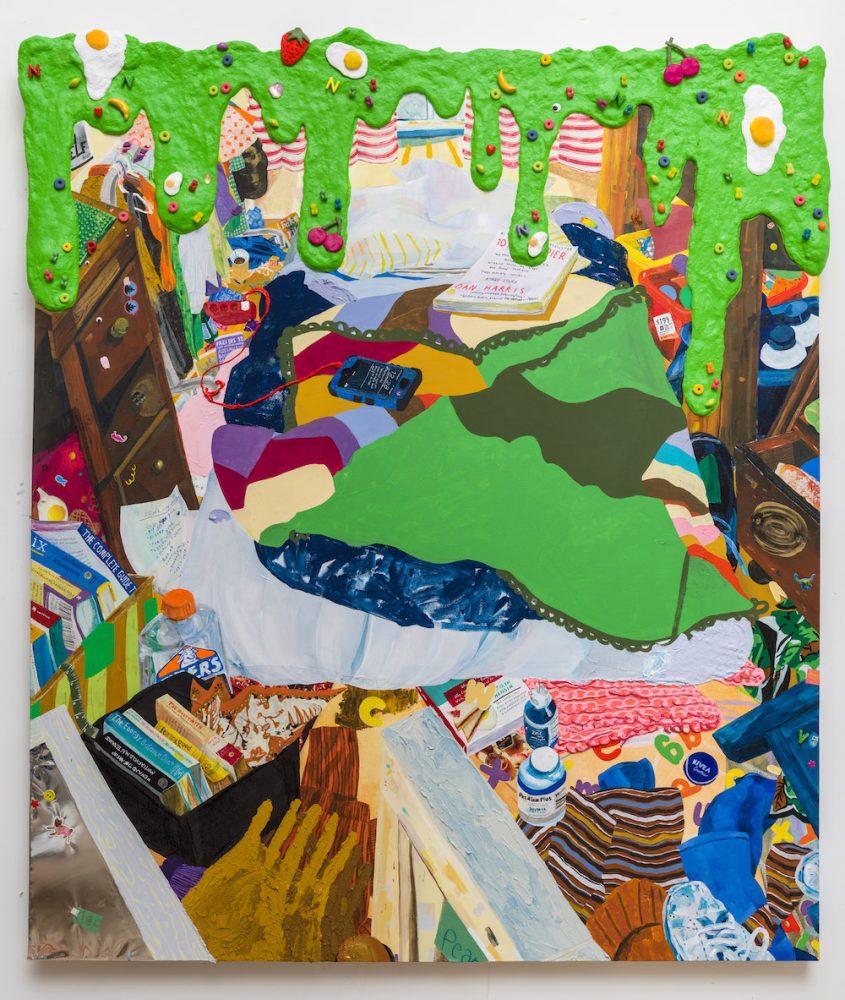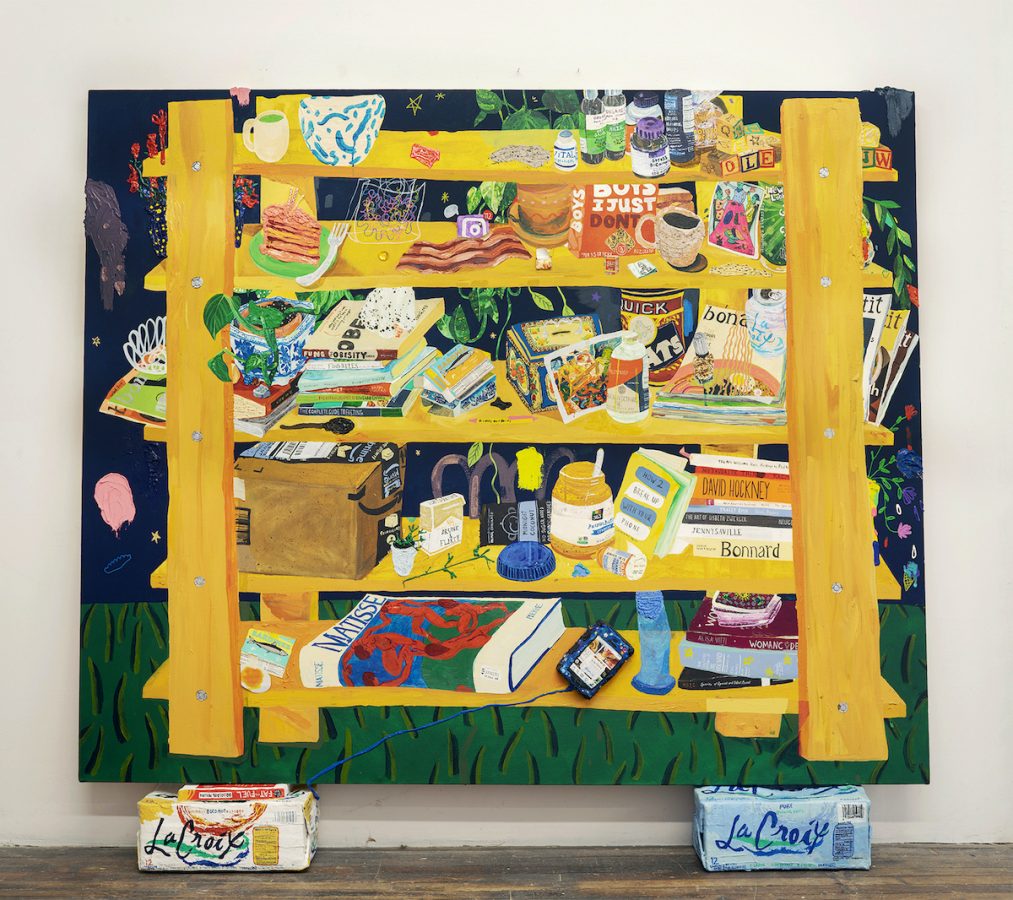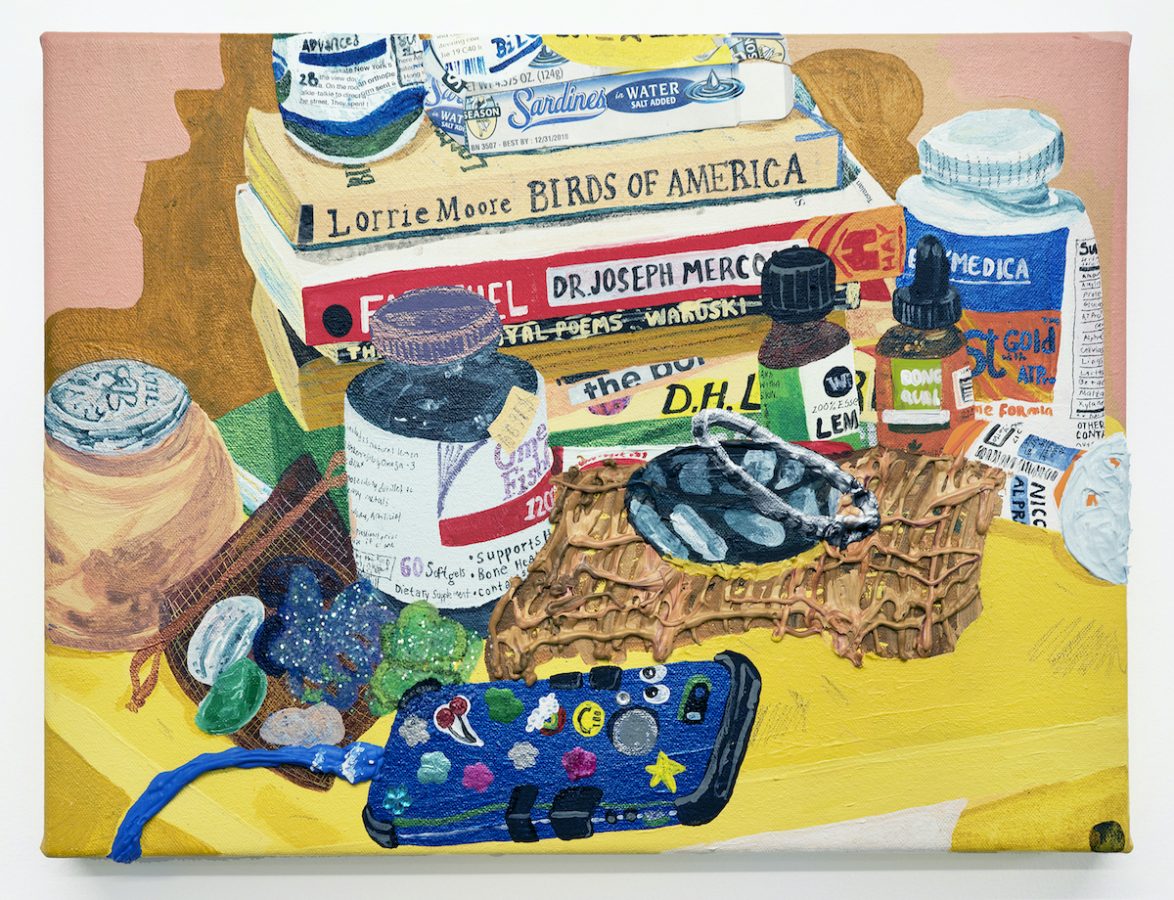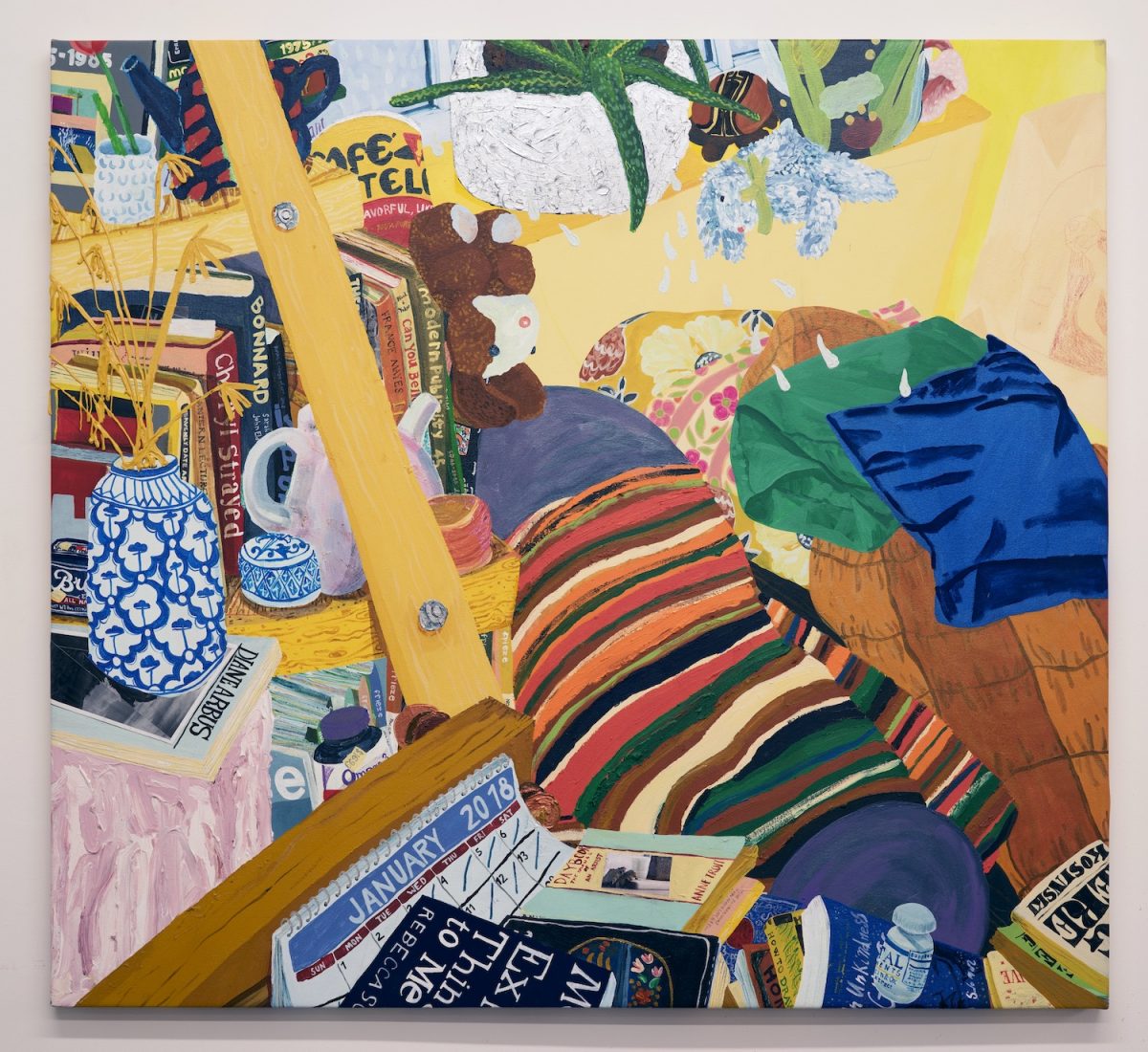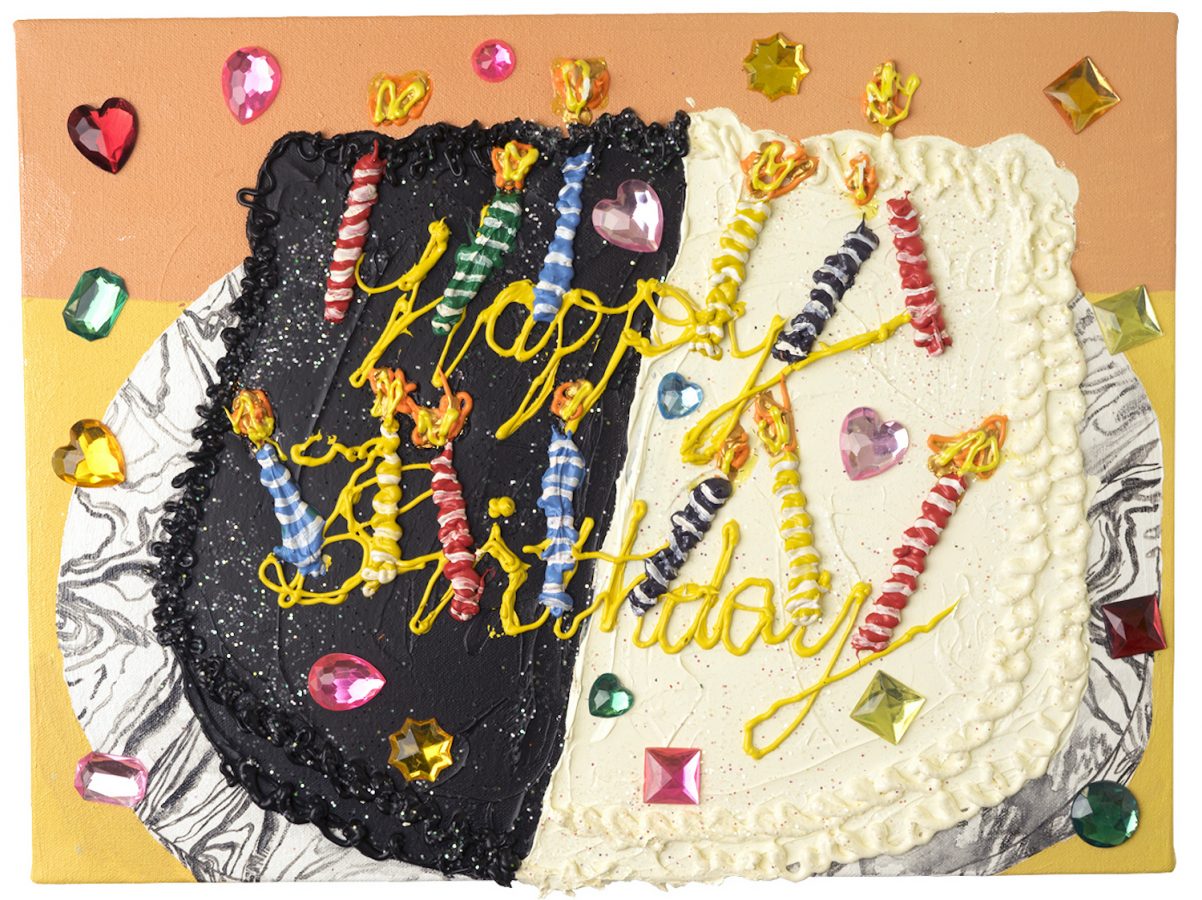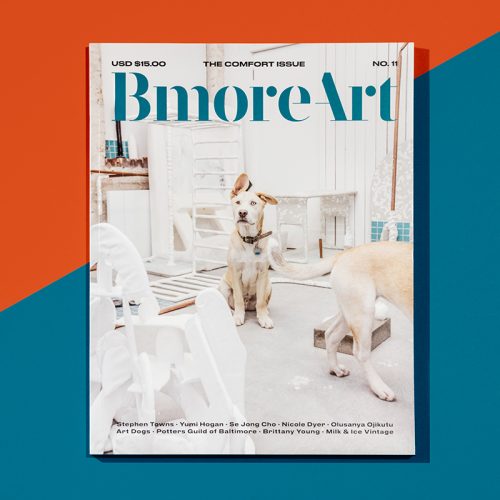Comfort sits precariously between excess and absence, an ephemeral balancing act that evinces occasionally as a “just right” escape from the realities of American capitalism. One cannot truly appreciate comfort without experiencing its opposite: To luxuriate in comfort food, you must first have felt intense hunger. To authentically feel secure in a room with other humans, you must first understand what it feels like to be ostracized. Everyone struggles to avoid vulnerability and pain, but comfort is a moving target rather than a destination, manifesting as a quest, achievement, escape, or fantasy always just beyond reach. For many, comfort is a battle, and we are often so fixated on achieving this fugitive goal that life can become a Sisyphean labor to access that which is not possessable, at least not for long.
Nicole Dyer is an artist with an intimate knowledge of scarcity and overindulgence, and her exuberant canvases, papier-mâché sculptures, and installations explore the universal hunt for satisfaction through depictions of everyday products from the supermarket that surround us, rendered beautiful under her hand. Like the 14th-century Dutch still-life painters who depicted tabletops piled high with edible symbols of wealth, power, and mortality, Dyer, a 2013 BFA graduate of the Maryland Institute College of Art, compulsively catalogs the objects that attract her attention with the allure of satiety and wholeness and packs them into dense tableaus of excess.
